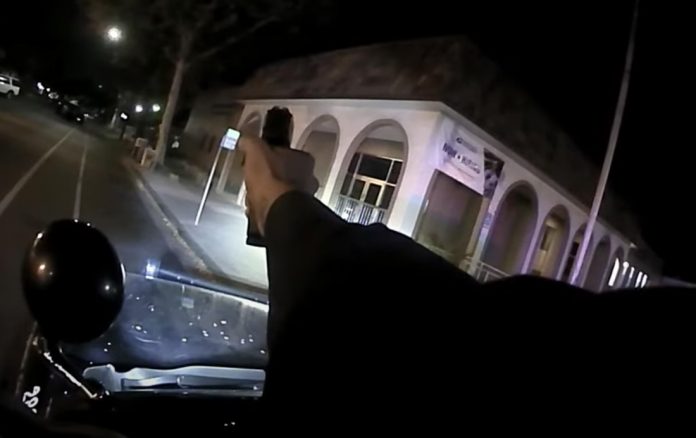
The Gilroy Police officer who shot and killed a man during an early morning shootout in 2021 acted lawfully in self-defense, the Santa Clara County District Attorney’s office determined.
In a report released May 27, Deputy District Attorney Robert Baker wrote there was “overwhelming evidence” to conclude that Officer Catalina Fraide “believed she was in imminent danger of being killed by [David] Lopez, that shooting him was necessary to protect against that danger, and that the amount of force she used was reasonable.”
“Officer Catalina Fraide’s disciplined response to a live-fire ambush by a violent felon intent on killing police officers is a credit to her training, professionalism and courage,” Baker wrote in the 20-page public report. “Under the facts of this case and the applicable law, Officer Fraide reasonably believed she needed to use deadly force to protect herself from being killed by David Lopez, and such force was necessary and reasonable under the circumstances.”
At 2:30am on Sept. 8, dispatchers received a 9-1-1 call from a man who identified himself as Dave Lopez, a 40-year-old Gilroy resident, according to police. He reportedly told the dispatcher that police were looking for him and that he would be waiting at the Gilroy Post Office at 100 Fourth St., saying he was unarmed and intoxicated.
Fraide, who was the first officer on scene, knew that Lopez was wanted for an attempted murder on Aug. 31, and used her vehicle’s public address system to instruct him to lie on the ground, according to the report.
However, the report stated Lopez immediately began shooting at Fraide with a handgun, striking her patrol vehicle, as he took cover behind a pillar. Fraide hopped out of the vehicle as it was still rolling, according to the report, extending her leg to apply the parking brake as she darted behind the vehicle.
In an interview with investigators, Fraide said she was “terrified” and thought Lopez “was going to pop up and murder me.”
Lopez’s 9mm handgun jammed, the report stated, and he pulled out a .40 caliber semiautomatic handgun from his shorts, and attempted to fire at Fraide again, but the gun was unloaded.
Fraide fired three shots at Lopez, but missed. At that point, Sgt. Kenneth Ellsworth began approaching the scene in his patrol car on Eigleberry Street, and Lopez appeared to be pointing his gun at him, dashcam footage shows.
Fraide said she believed Lopez was attempting to reload his gun, and to protect herself and other responding officers, she fired two more shots at Lopez, one of which struck him in the head, killing him.
Gilroy Police released video footage from Fraide’s body-worn camera and vehicle dashcam soon after the incident.
Fraide, who was hired by Gilroy Police in August 2019, reportedly told investigators that she didn’t have a chance to de-escalate the situation as she was under attack as soon as she arrived.
Baker’s report cited several California Penal Code sections, one of which states that police officers “may use deadly force when necessary to protect themselves and others from the imminent threat of death or serious bodily injury.”
“Under the totality of circumstances, any reasonable officer in the same situation would be expected to respond in the same manner as Officer Fraide to defend against the danger posed by Lopez,” Baker wrote. “Consequently, her actions were in lawful self-defense.”
An autopsy found that Lopez was under the influence of methamphetamine and amphetamine during the shooting.
A GoFundMe fundraiser to help pay for Lopez’s funeral costs was created by a friend of the family on Sept. 9.
The page describes Lopez, a father of four, as a “great father who loved his family unconditionally.”
“David was a bright spark in this world and will be deeply missed,” the page states. “He touched the lives of so many and it’s our turn to give back to his family in their time of need. We are raising money to cover the costs of the funeral and memorial services for David Lopez’s family as this passing was completely unexpected.”
The District Attorney’s Office investigates all fatal law enforcement encounters to determine if the lethal force was legal.













